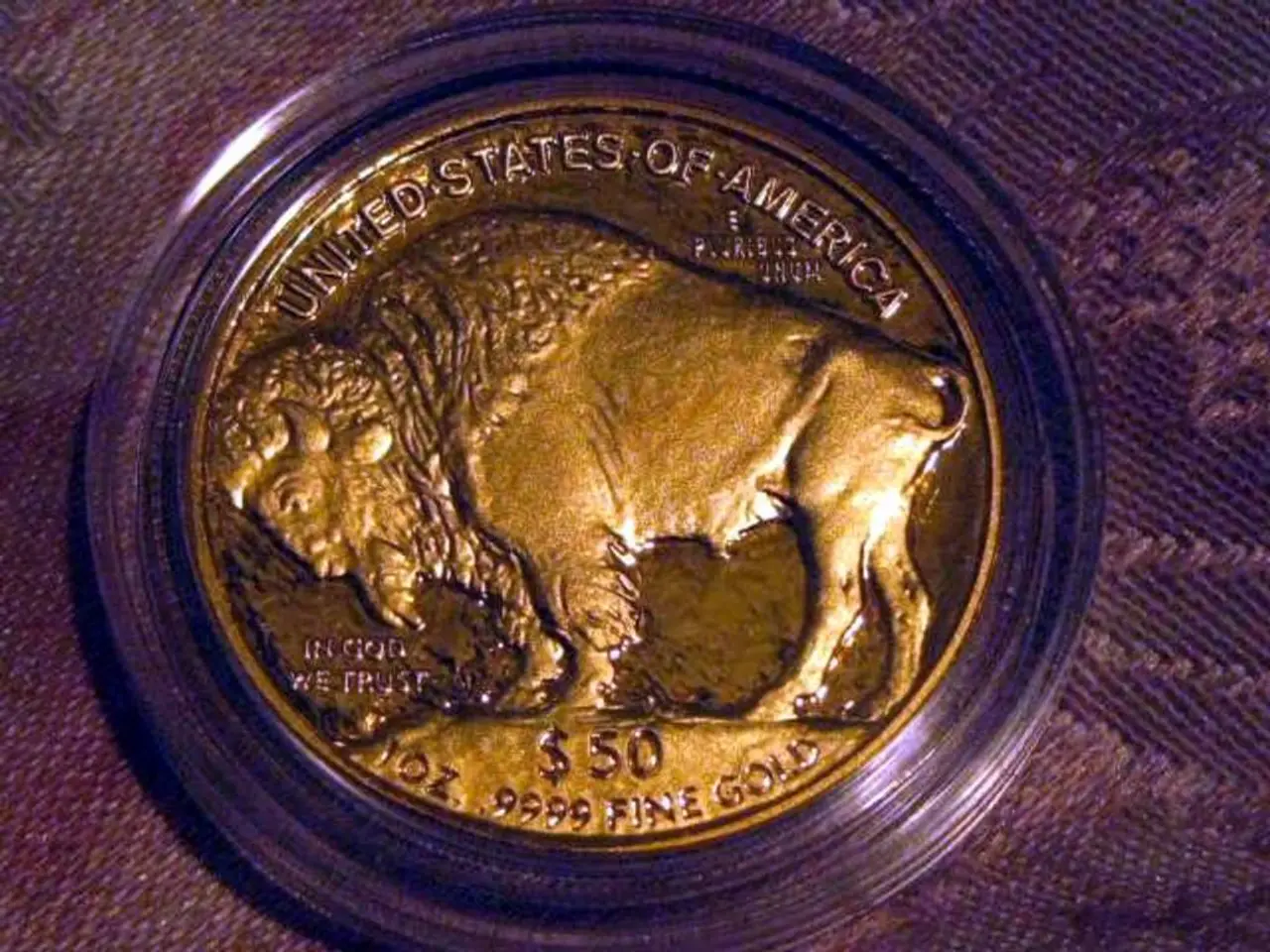Gold inflow into Exchange-Traded Funds (ETFs) persisted throughout July, as reported by the World Gold Council.
In July, gold-backed exchange-traded funds (ETFs) in Western markets witnessed significant growth, with a total of 23 tonnes added to global holdings. This surge was particularly noticeable in North America and Europe, where institutional and retail investors are increasingly allocating funds to gold ETFs for portfolio diversification and hedging against inflation and geopolitical risks [1][3][5].
Germany saw the largest inflows in Europe, with four tonnes added in July. The United Kingdom also reported inflows, with gold funds adding seven tonnes of material [1]. North America saw a substantial increase as well, with funds in the region adding 13 tonnes of gold, pushing total holdings to 1,870 tonnes [1].
The driving forces behind this trend include macroeconomic and geopolitical uncertainties, such as trade tensions and growth concerns in Europe, and central bank diversification into gold [1][3][5]. Inflation concerns have also played a role, as investors seek gold as a hedge against currency devaluation [5].
Gold ETFs offer institutional-grade hedging with minimal tracking error and low fees, making them an attractive vehicle for gaining gold exposure compared to direct physical ownership or mining stocks [1]. Strategic models recommend a substantial portion of gold exposure be held through ETFs for stability, with the remainder in mining equities to capture upside [1][4].
This trend is reflected in the asset management industry, with Asia's AUMs rising by $93 million to $34.6 billion in July. In Asia, ETFs recorded a one-tonne inflow in July, pushing aggregated holdings to 322 tonnes [2]. However, funds on Mainland China experienced outflows of three tonnes in July [2].
In Europe, inflows totaled $1.8 billion, driving cumulative AUMs to $146.1 billion. This significant investment has pushed Europe's gold-backed ETFs to a cumulative holding of 1,377 tonnes [2]. The World Gold Council attributed Europe's gold inflows to gold's outsized strength in British pounds, weaker-than-expected economic data, and a cooling labor market [2].
Despite the positive inflows, the World Gold Council noted that flows did slow in North America due to a short-term rebound in the US dollar and some investors taking profits and rotating into equities [2]. However, with a value of $1.4 billion, this pushed regional AUMs to a new record peak of $198.3 billion [2].
In conclusion, the driving forces behind the increase in gold ETFs in Western markets are a combination of gold’s inflation hedge and safe-haven appeal amid macroeconomic and geopolitical risks, supportive central bank actions, and the convenient, cost-effective access ETFs provide institutional and retail investors [1][2][3][5]. With total holdings at the end of July standing at their highest level since August 2022, it appears that this trend is set to continue.
Gold-backed Exchange-Traded Funds (ETFs) in the finance industry experienced a surge in investment, driven by institutional and retail investors seeking portfolio diversification and inflation hedging, as well as safer investment options in the face of global economic uncertainties. The World Gold Council, a key authority in the gold industry, acknowledged this trend and reported a record-breaking peak in total holdings for North American and European gold ETFs by July's end, underscoring technology's role in facilitating easy and cost-effective access to gold trading for businesses and individuals alike.




